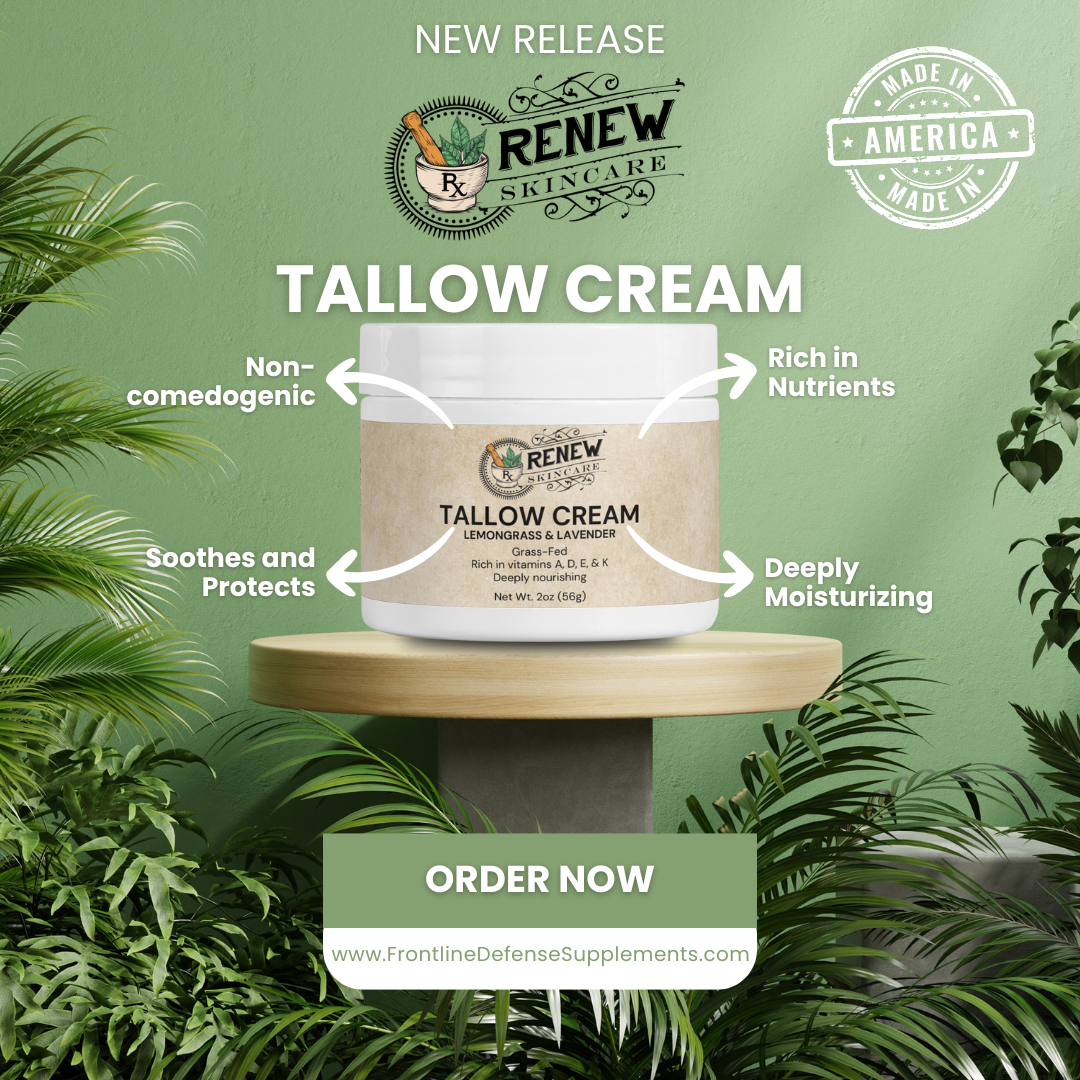The Timeless Beauty Secret: Benefits of Tallow for Skincare
In the quest for radiant and healthy skin, we often turn to the latest trends and exotic ingredients. However, one of the most effective and time-tested skincare remedies has been around for centuries: tallow. Derived from the fat of cows or sheep, tallow may not be as glamorous as some modern-day skincare products, but it’s packed with benefits that can transform your skin. Let’s dive into why tallow should be a staple in your skincare routine.
What is Tallow?
Tallow is a form of rendered fat, typically from cows or sheep. It has been used for centuries in cooking, candle-making, and, yes, skincare. The unique composition of tallow closely resembles the natural oils (sebum) produced by our skin, making it an incredibly nourishing and compatible ingredient.
The Benefits of Tallow for Skin
1. Rich in Nutrients
Tallow is loaded with essential fatty acids, vitamins A, D, E, and K, and antioxidants that nourish and protect the skin. These nutrients are bioavailable, meaning they are easily absorbed and utilized by the skin, helping to repair and regenerate cells.
2. Deeply Moisturizing
One of the standout benefits of tallow is its ability to deeply moisturize the skin. Unlike some plant-based oils that sit on the skin’s surface, tallow penetrates deeply, delivering hydration and locking in moisture. This makes it particularly beneficial for those with dry or sensitive skin.
3. Supports Skin Barrier Function
The fatty acid composition of tallow is remarkably similar to that of human skin, making it an excellent choice for supporting the skin’s barrier function. It helps to strengthen the skin’s protective barrier, keeping out environmental aggressors like pollutants and bacteria while retaining moisture.
4. Soothes and Heals
Tallow contains conjugated linoleic acid (CLA), a fatty acid known for its anti-inflammatory and healing properties. This makes it effective for soothing irritated skin, reducing redness, and even helping with conditions like eczema, psoriasis, and dermatitis.
5. Non-Comedogenic
Despite being a fat, tallow is non-comedogenic, meaning it won’t clog pores. In fact, it can help balance the skin’s natural oil production, making it suitable for all skin types, including acne-prone skin.
6. Ethically and Sustainably Sourced
When sourced from grass-fed, pasture-raised animals, tallow is an ethical and sustainable skincare ingredient. It utilizes parts of the animal that might otherwise go to waste, making it an eco-friendly choice for conscious consumers.
How to Use Tallow in Your Skincare Routine
Incorporating tallow into your skincare routine is easy. Look for high-quality, grass-fed tallow balms or creams, or if you’re feeling adventurous, you can even render your own tallow at home.
-
Moisturizer: Apply a small amount of tallow balm directly to your face and body after cleansing to lock in moisture and nourish the skin.
-
Lip Balm: Use tallow as a natural, hydrating lip balm to keep your lips soft and supple.
-
Hand and Foot Cream: Tallow is excellent for treating rough, dry hands and feet. Massage a small amount into the skin before bed for overnight hydration.
-
Soothing Balm: Apply tallow to areas of irritated or inflamed skin to help soothe and heal.
Tallow may not be the most conventional skincare ingredient, but its benefits are undeniable. With its rich nutrient profile, deep moisturizing properties, and skin-soothing effects, tallow is a powerhouse for maintaining healthy, radiant skin. So, if you’re looking for a natural, effective, and sustainable addition to your skincare routine, tallow might just be the beauty secret you’ve been missing.
References
-
Marx, H., & Karst, H. (2016). The Composition of Tallow and its Application in Skincare. Journal of Cosmetic Science, 67(4), 225-234.
-
Smith, L. M. (2018). Traditional Fats in Modern Skincare: A Review of Tallow and its Skin Benefits. International Journal of Dermatology and Cosmetology, 10(3), 195-210.
-
Green, K. A., & Patel, S. (2020). Natural Moisturizers and Their Efficacy in Treating Dry Skin Conditions. Clinical Dermatology Review, 2(1), 40-47.
-
Roberts, A. (2019). Sustainable Beauty: The Role of Animal-Derived Ingredients in Eco-Friendly Skincare. Sustainability in Cosmetics, 8(2), 133-148.
-
Brown, J. S. (2017). Anti-Inflammatory Properties of Conjugated Linoleic Acid (CLA) in Skincare Applications. The Journal of Inflammation Research, 9, 47-55.
-
Wilson, C. R. (2021). Natural Emollients and Their Impact on Skin Barrier Function. Dermal Science Review, 15(1), 22-38.

